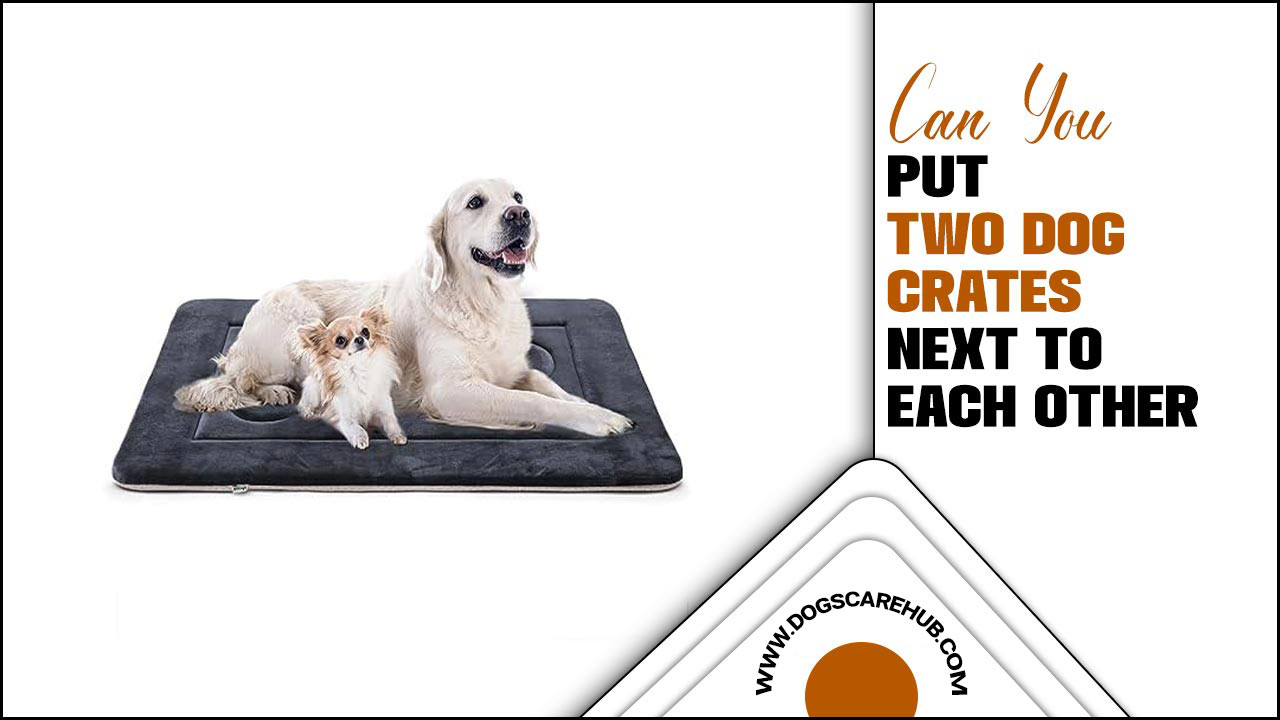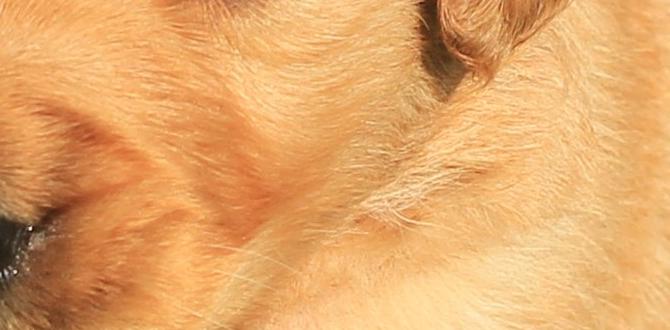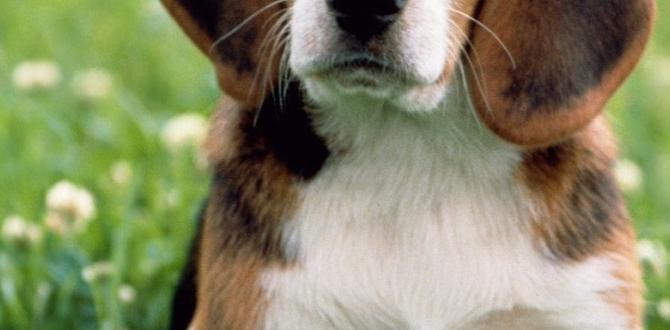Resource guarding in dogs can be managed with positive training and understanding. By identifying triggers, managing the environment, and teaching your dog polite alternatives, you can build trust and prevent guarding behaviors.
Is your dog a bit possessive of their favorite toys, food, or even your lap? You’re not alone! Dog resource guarding is a common behavior where dogs try to protect something they value from perceived threats. It can be unsettling, and you might worry about it escalating. But the good news is, with the right understanding and gentle techniques, you can help your furry friend feel more secure and less inclined to guard. We’ll walk through proven solutions step-by-step, showing you how to build a stronger bond based on trust.
Understanding Dog Resource Guarding: What It Looks Like
Resource guarding is a natural canine instinct. Dogs protect the things that are important to their survival and well-being, like food, toys, or even sleeping spots. While it’s normal, it can become a problem when it leads to behaviors like growling, snapping, or stiffening when someone approaches their valued item.
Recognizing resource guarding is the first step. You might see your dog:
- Stiffening when someone gets near their food bowl.
- Growling if someone tries to take a toy from them.
- Eating very quickly or moving their food away.
- Giving “whale eyes” (showing the whites of their eyes) when you approach.
- Snapping or nipping if you get too close.
- Leaving their resources uneaten when people are around.
It’s important to remember that guarding behaviors often stem from fear or insecurity, not meanness. Your dog isn’t trying to be dominant; they’re trying to prevent something they cherish from being taken away. Understanding this helps us approach the situation with empathy.
Why Do Dogs Resource Guard?
Several factors can contribute to resource guarding:
- Genetics and Breed Tendencies: Some breeds might have a predisposition due to their historical roles (e.g., herding or guarding).
- Past Experiences: A dog who has had their food stolen, been through a shelter, or experienced scarcity might guard more.
- Competition: If multiple pets in the household are competing for resources, it can trigger guarding.
- Unwanted Physical Contact: If a dog is repeatedly bothered while eating or playing, they might start guarding to avoid future disruptions.
- Sickness or Pain: A dog who isn’t feeling well might guard their food or resting spot more intensely. If you suspect this, consult your veterinarian.
It’s crucial to differentiate between casual possessiveness and true resource guarding. If you’re unsure, a professional dog trainer or behaviorist can help assess the situation.
Proven Solutions: A Step-by-Step Approach
The goal of these solutions is to change your dog’s emotional response to you or others approaching their prized possessions. We want them to associate your approach with good things, not threats.
Step 1: Management is Key (Preventing Practice)
The most important initial step is to prevent your dog from practicing guarding behaviors. Every time your dog successfully guards, they learn that guarding works. This means:
- Separate Feeding: Feed dogs separately, especially if you have multiple pets.
- Supervise Playtime: Don’t leave high-value toys lying around unsupervised with dogs who guard.
- Avoid Taking From Mouth: Never try to forcefully take something from your dog’s mouth, especially if they are guarding it.
- Secure Valuables: If your dog guards specific spots, block access to those areas. For example, if they guard a comfy chair, prevent them from going on it when you can’t supervise.
Management isn’t punishment; it’s a temporary but essential strategy to stop the behavior from getting worse while you work on training. You can learn more about positive management strategies from resources like the Humane Society of the United States.
Step 2: Desensitization and Counter-Conditioning (DSCC)
This is the core of behavior modification for resource guarding. We want to change your dog’s association with you approaching their things from negative (fear/anxiety) to positive (anticipation of good things).
For Food Guarding:
- The “Trading Up” Game: When your dog is eating kibble or a chew, approach from a distance. As you get closer, drop a very high-value treat (like a piece of chicken or cheese) on the floor, a safe distance away from their bowl. Then, back away.
- Gradual Approach: Over many sessions, slowly decrease the distance you approach before dropping the treat. Always drop the treat and back away. Your dog learns that your approach predicts yummy treats arriving.
- Introducing Your Hand (Carefully): Eventually, you can get closer. When you are near their bowl, reach down away from the bowl and drop a treat. The goal is for your dog to look at you expectantly, not to tense up or growl.
- “Trade” Your Own Item for Theirs: Once your dog is comfortable with your presence, you can try offering a trade. Hold a super-tasty treat (higher value than what they have) and wait for them to voluntarily let go of their item to take the treat. Immediately return their item after they’ve eaten the treat. This teaches them that giving up something can lead to a better reward.
For Toy Guarding:
- Similar Trading Game: While your dog has a toy, approach with a better toy or a high-value treat.
- “Drop It” Command: Train a reliable “drop it” cue. Practice when they have low-value items. Say “drop it,” offer a treat, and when they release the toy, reward them and immediately give the toy back. Gradually increase the value of the toy.
- “Take It” Game: Get two identical toys. Throw one. When your dog retrieves it, show them the second toy, excitingly. Once they drop the first toy to get the second, throw the first one again and pick up the second. This ensures they don’t feel like they’re losing out.
Important Considerations for DSCC:
- High-Value Treats: Use something your dog absolutely loves – chicken, cheese, hot dogs, liver treats. Kibble won’t cut it here.
- Distance is Your Friend: Start far away and only get closer as your dog shows relaxed body language.
- Short Sessions: Keep training sessions brief (5-10 minutes) and positive.
- Never Punish Guarding: Using punishment can make the behavior worse and damage your relationship.
- Observe Body Language: Learn your dog’s subtle cues of stress (lip licking, yawning, stiffening, low growl). If you see these, you’ve moved too fast. Back up and increase distance.
Step 3: Teach Alternative Behaviors
Resource guarding often happens because dogs feel they need to manage their own resources. We can teach them that we are reliable providers and that they don’t need to worry.
“Leave It” Command
This is crucial for safety and for disengaging your dog from something they shouldn’t have or that’s triggering guarding. Start by placing a treat on the floor and covering it with your hand. When your dog stops trying to get it, say “leave it” and give them a different treat.
Gradually progress to leaving the treat uncovered, then dropping it. The key is that your dog learns to disengage from the tempting item when you give the cue.
“Mat” or “Place” Training
Teaching your dog to go to a designated mat or bed on cue can be incredibly useful. You can send them to their mat when you’re preparing meals or handling their food bowl. This gives them a job and a safe space away from the resource.
Gentle Handling
Practice gentle handling around their bowls and toys when they are not eating or playing with high-value items. Pet them while they eat a normal meal, calmly pick up their empty bowl, or gently move a toy away and then give it back. These are foundation exercises to build comfort.
Step 4: Environmental Changes and Enrichment
Sometimes, the environment can contribute to guarding. Making positive changes can help.
- Puzzle Feeders and Slow Feeders: For dogs who guard food, using puzzle toys or slow feeders can make mealtime a less guarded activity. It spreads out the food and makes it more engaging.
- Reduce Competition: If you have multiple dogs, ensure they each have their own food and water bowls placed far apart. Provide plenty of toys for each dog.
- Provide Enough Resources: Ensure your dog has plenty of appropriate chew toys and is not truly deprived of mental or physical stimulation, which can sometimes lead to hoarding behaviors.
- Safe Spaces: Create comfortable, secure “safe zones” for your dog where they can rest undisturbed. This might be a crate with a comfy bed, a special dog bed in a quiet corner, or a designated room.
When to Seek Professional Help
While many cases of resource guarding can be managed with these positive methods, some require expert guidance. You should consider consulting a certified professional dog trainer (CPDT-KA/SA) or a veterinary behaviorist if:
- Your dog’s guarding behavior is severe, dangerous, or escalating.
- You are feeling overwhelmed or fearful of your dog.
- Your dog has bitten someone.
- You are not seeing progress with positive reinforcement methods.
A qualified professional can assess the specific situation, identify the root cause, and develop a tailored behavior modification plan. They can ensure your safety and your dog’s well-being. You can find accredited professionals through organizations like the Certification Council for Professional Dog Trainers.
Understanding Dog Body Language: A Crucial Skill
Learning to read your dog’s subtle cues is paramount when dealing with resource guarding. Many guarding incidents occur because owners miss early warning signs. Here’s a quick look at some common signals:
| Signal | Meaning | When to Watch For |
|---|---|---|
| Stiffening | Tension, unease, or a warning that the dog might escalate. | Approaching their food, a toy, or a perceived threat. |
| Lip licking | Stress or appeasement. | When someone approaches their valuable. |
| Yawning (when not tired) | Stress or discomfort. | When feeling pressured or uneasy. |
| Whale Eye | Looking away while showing the whites of their eyes – a sign of unease. | When you or another dog gets too close to their item. |
| Hard Stare | Direct challenge or strong warning. | When feeling threatened by an approaching person or animal. |
| Growling | Direct warning, “Back off!” This is a communication signal, not aggression to be punished. | When the perceived threat gets too close to their resource. |
| Snapping | A more forceful warning or an attempt to create distance. | If the growl is ignored or the threat persists. |
By recognizing these signals, you can stop the situation before it escalates. If you see any of these, calmly back away and reassess the distance. Your quick reaction can prevent a bite and reinforce your trust with your dog.
Frequently Asked Questions About Dog Resource Guarding
Q1: Is resource guarding something my dog will grow out of?
A: Not usually. Resource guarding is an instinct and a learned behavior. Without intervention, it can often get worse rather than better. Positive training and management are necessary.
Q2: My dog growled at me. Should I punish them?
A: No! A growl is your dog’s way of saying, “I’m uncomfortable, and I want you to back off.” Punishing a growl is dangerous because it can teach your dog to skip the warning and go straight to biting. Instead, respect the growl by backing away and addressing the underlying cause through management and training.
Q3: How can I stop my dog from guarding treats I give them?
A: The best approach is to start with management so they don’t practice guarding. Then, use desensitization and counter-conditioning. Approach your dog while they have a treat, drop a better treat, and then move away. This teaches them that your presence means good things happen. You can also practice the “trading up” game with lower-value treats.
Q4: What is the difference between resource guarding and aggression?
A: Resource guarding is a specific type of aggression aimed at protecting a valued item. It’s usually contextual and triggered by someone approaching a resource. General aggression might be more pervasive and triggered by a wider range of stimuli. Both require professional guidance if severe.
Q5: Can multiple dogs in a household lead to resource guarding?
A: Yes, competition for resources like food, toys, or even attention can definitely exacerbate or trigger resource guarding. Ensuring each dog has their own designated resources and is fed separately can significantly help prevent conflicts.
Q6: My dog guards bones. What can I do?
A: Bones are high-value items! Management is crucial here – don’t leave bones lying around if your dog guards them. Practice the trading game: approach your dog with a really tasty treat (like a piece of cheese or a bit of cooked meat) while they have a bone. When they look at you or approach the treat, drop it on the floor away from the bone, and then slowly move away. They learn your approach means a bonus reward!
Building a Relationship of Trust
Dealing with dog resource guarding can feel stressful, but it’s completely manageable. Remember, your dog is likely acting out of instinct and a desire to protect what they feel they need. By implementing management strategies to prevent practice, using positive reinforcement techniques like desensitization and counter-conditioning, and teaching your dog to be calm and confident, you are building a deeper bond.
It takes patience, consistency, and a lot of positive reinforcement, but the reward is a more secure, happy dog and a stronger, more trusting relationship between you. Celebrate small victories, stay consistent with your training, and don’t hesitate to seek professional help when needed. You’ve got this!
Meet Elyse Colburn, the devoted canine companion and storyteller behind the enchanting world of “Tales, Tails, and Adventures Unleashed.” A passionate dog enthusiast with a heart full of paw prints, Elyse Colburn shares heartwarming tales and insightful adventures, celebrating the joy, loyalty, and endless antics that make every dog a true hero. Join Elyse Colburn on this tail-wagging journey, where every post is a love letter to our four-legged friends.





